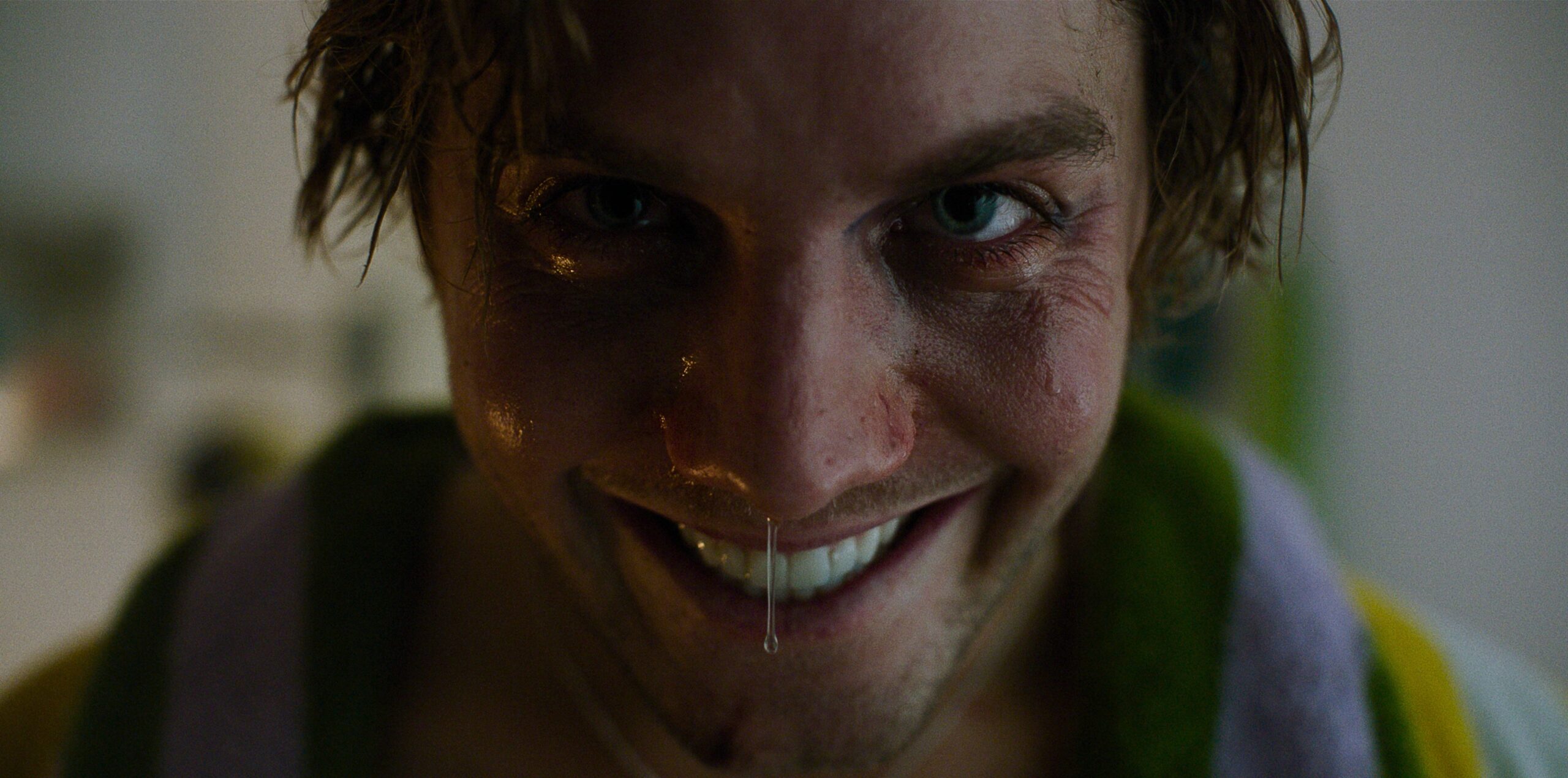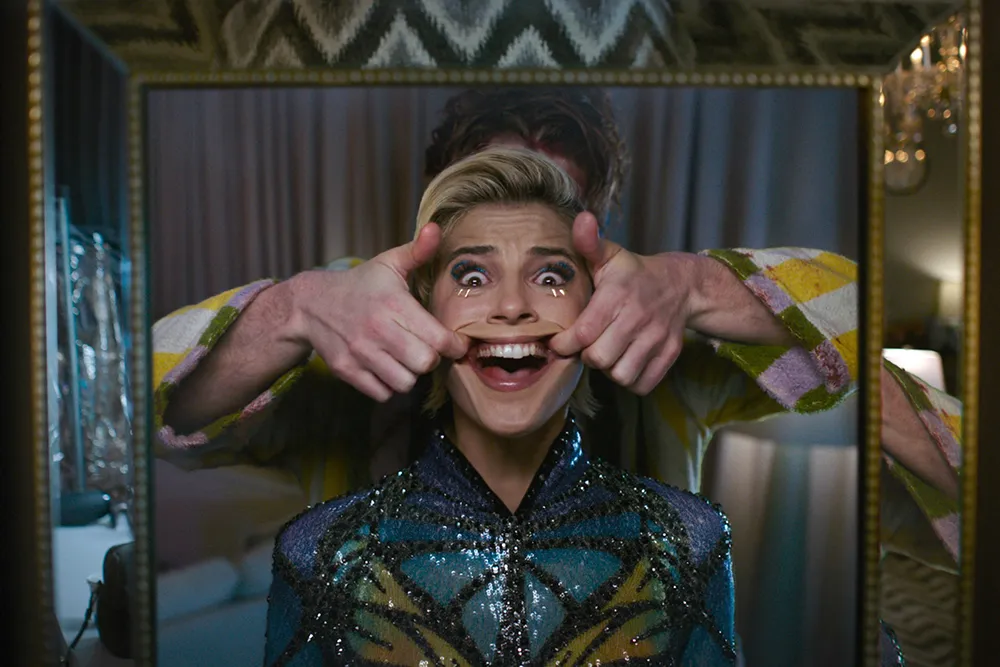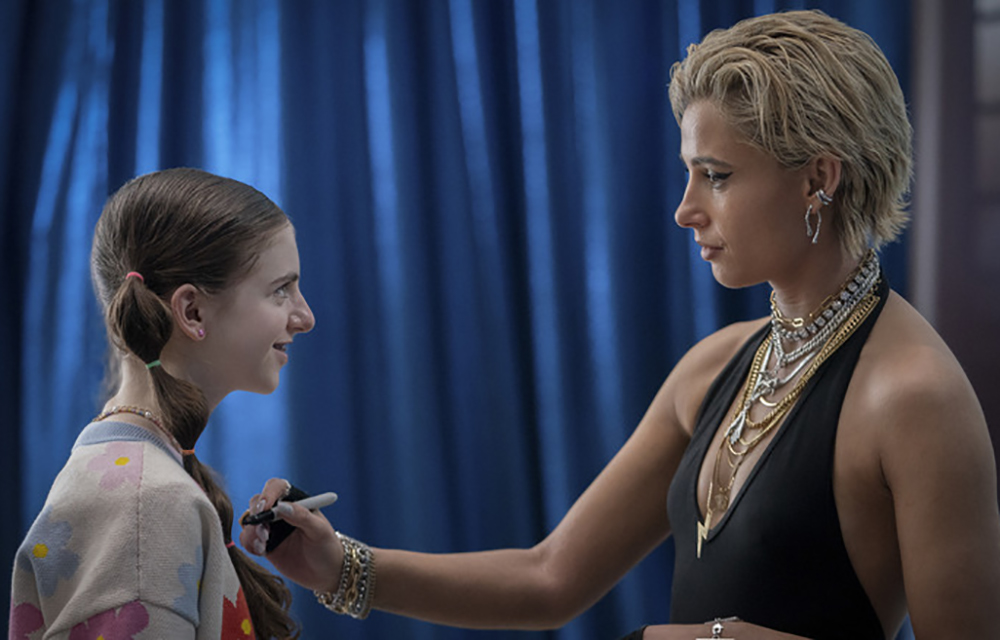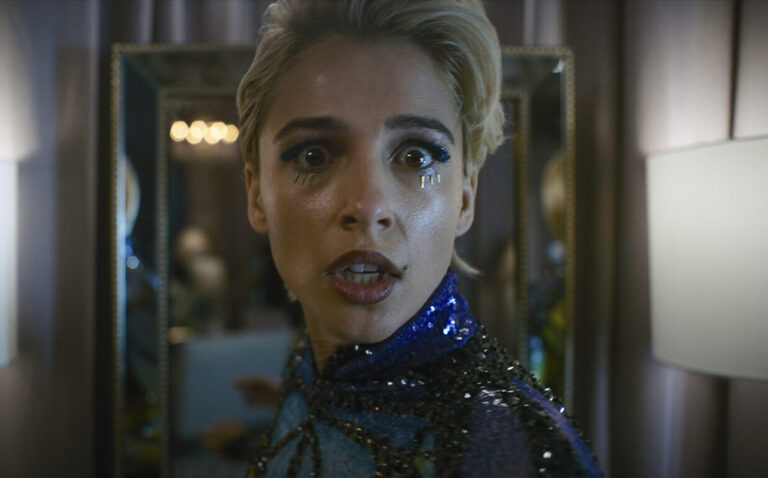Horror is a genre full of ideas and creativity, as filmmakers construct their madness and chaos via violent and bloody creations that leave a mark on the characters in their stories and, if done effectively, the viewer. But most modern horror films have centered around trauma and grief. And it is understandable why many directors have pivoted to such a topic. All of us have gone through a lot these past couple of years. I’m not only referring to the pandemic. Somehow, this pet topic has become a joke in itself by horror fans, as it seems that most films produced by big studios are centered around trauma and doing so via the same lens and notions of the theme at hand–removing the singularity and vision that molds the genre we all love.
Trauma in Modern Horror and How “Smile” Approaches It
When it works, it is really effective. But it all depends on the director at hand. A few examples that come to mind are Jennifer Kent’s “The Babadook”–having a tenth-anniversary release in November–and Ari Aster’s “Midsommar.” There are many more. However, the great majority do not add that special, ingenious touch that directors like Kent and Aster have in spades. Hollywood went down the path of “if it works once, let’s do it a hundred times more.” Commercially, there are more hits than misses. Thematically and vision-wise, these projects falter heavily. One of those films with that division is Parker Finn’s “Smile,” based on his short film “Laura Hasn’t Slept.” Finn made an exciting concept based on the “It Follows” trademark.
Supernatural entities embodying strangers and loved ones followed your every move. In the case of “Smile,” they did so with a big Joker-like smile on their faces. These entities were the personification of the hunted’s trauma and guilt. They slowly eat them alive as the days go by. It isn’t something new or out of the ordinary. But it is fascinating on paper how this concept is forged through delusion and melancholy–drowns the essence of the vessel and passes around like an ever-consuming disease. I wasn’t a fan of the film’s thematic exploration, primarily due to Finn repeating the point multiple times through creaky dialogue and weary exposition. There are a few great moments, much of them depending on the prosthetics and bloody situations. But they are too far and between for one to enjoy thoroughly.
It has a circular motion, and a good premise ends like the one before. You notice the cracks in the narrative due to Finn overextending his short’s concept without a precise hook or thematic throughline. “Smile” is framed almost entirely around what the short had to offer rather than exploring broader, horrific territories. Nevertheless, none of that stopped its success. The draw was more prominent than many anticipated, to the point where we now have a sequel, “Smile 2”, two years later. Although I was skeptical about Finn as a director and helming this follow-up, the project impressed me with what he had to offer this time around.
An Unasked-For Sequel Manages to Surprise
Of course, many faults still make their way from the 2022 film, and some are built by this re-branding of the concept. However, Finn is more adventurous in his direction, crafty in his horror set pieces, and campier in tone, for better or worse. The world of “Smile” might be stuck in a wheel of its creation. Yet the unwarranted sequel fully embraced the silliness of its concept to bring forth some solid popcorn entertainment, as well as still rocky thematic dissections, for an overall fun time. “Smile 2” distances itself from what we saw before via new threads that call back to the past and intentionally and unintentionally joke about the idea that every horror picture should center around trauma, guilt, and desolation.
The film begins with an unexpected shootout six days before the narrative kicks in. This is where the chain of events starts for the trauma-feeding entities that arrive. An unnamed man (Kyle Gallner) is seeking revenge for the murder of his wife and kids. A drug dealer is the root of the cause. However, none of these events are explored or mentioned, as they add nothing to the story. There’s a haunted past and a possible prominent future. Yet the man is once again cursed by an unlucky myriad of decisions. He decides to finish things off with violence. And so a “one-take” chase emerges.

The man evades one bullet after another. He thinks he is an unstoppable force nearing his escape from whatever is slowly killing him… (*spoiler*) right until he is run over by a car, which leaves him as a splatter of blood and guts in the middle of the road. None of that seems to matter. He is a disposable character whose backstory does not matter in the least. The only detail in this cold open that influences the rest of the movie is the involvement of Lewis (Lukas Gage), a local dealer who has passed the disease of a lifetime. The revenge-seeking man didn’t mean to give this “infection” to Lewis. But he was one of the few people there to get out unscathed. So, the poor Lewis got a hold of the worst hand possible.
The Trials and Tribulations of Popstar Skye Riley
A treacherous week is upon him. Who would be the one who will receive this penalty of horrifying, personified melancholy? Unfortunately, it is pop sensation Skye Riley (a terrific and all-in Naomi Scott, delivering her best work to date). She is a recovering alcoholic and drug abuser who was involved in a car accident that killed her partner, Paul Hudson (Ray Nicholson), and injured her vastly. Since that accident over a year ago, Skye has been in rehabilitation, both for her substance abuse and her back and leg problems that occurred because of the crash. She left a world tour behind because of the incident. But now, Skye is preparing to pick things up where they were left yet with a new light–fully recovered better than ever, as she mentions in her interview on Drew Barrymore’s morning show.
Everything is set and docked for her first “comeback” show in New York. The only things that still linger are her back pain and fractured relationship with her ex-best friend, Gemma (Dylan Gelula). For the former, she takes Vicodin to soothe her tension and discomfort. You see the scars of the past through literal means. Marks on her body act like irremovable tattoos–a piece of the troubled past in which she never wants to partake. She holds her head high to leave it all behind. But that back pain serves as a reminder of what once was is now gone. This is a brand new start for her and those she holds dear: her mother, Elizabeth (Rosemarie DeWitt), assistant Joshua (Miles Gutierrez-Riley), and actor (and maybe hubby) Darius (Raúl Castillo).
When her current supply of Vicodin accidentally falls to the bottom of the sink, Skye asks her plug, the currently deranged Lewis, for more. Skye arrives at his apartment. But he doesn’t remember answering her messages. He looks troubled and dazed, even more so by his endless snorting of cocaine. Something is bothering him to the point of delusion. He is seeing things that aren’t there. He forgets everything he says. And, on top of it all, he reacts erratically to every action. Right until that “thing” haunting Lewis gets a hold of him. The whole thing immediately rattles Skye. Imagine how worse her condition will be after she sees Lewis kill himself right in front of her by smashing his face with a dumbbell, all while having a wide grin on his face.
The Overuse of Jumpscares by Director Parker Finn
Lewis’ face is all smashed up like minced meat. Yet, you still sense the villainous smile on his face. This is an image that won’t allow Riley or the audience to shake off quickly enough. She doesn’t know it now. But the infection has been spread–Skye Riley is now the vessel of a paranormal entity that will feed on her woes, both past and present. Her first symptoms are mirrorings of Lewis, haunting her daily living. Jumpscares are used to create this effect, some of which work, as the audience in my screening was shaken. However, others feel like a cheap tactic due to Finn overusing them without a space for the viewer to breathe in between.
Big studio productions overdo the “quiet, quiet… boom!” staging for some of the frights. I think it must be used less, and other means must be found to catch the audience’s attention. Having said that, since the film has formally approached its campiness and silly nature, these jumpscares work better than in most studio pictures. The jumpscares have the gimmick of the cast and background actors making a wide grin–a switch to their regular stances. The first film had these elements. But “Smile” leaned more into an over-serious tone, which ruined the tension. Camp is more of a coating to make the audience feel at ease, as a protective shield. However, when Finn wants to take the guard out, he does so surprisingly well, with bloody images and mild yet solid gore.

These tend to appear in the latter half of the film. But they are welcomed with open arms at any moment. The story pivots as the pressure on Riley to meet her career’s demands increases vastly. These “everyone is depending on you” reminders ruin her day. She is constantly in and out of delusion, never knowing what is or isn’t real. And nobody seems to understand her pain or acknowledge that she is going under, both literally and figuratively. These decisions for a vast tour were made with hurriedness and without her concern. They all love Skye, yet they all think about the cash that arrives every time she hits the stage.
The Skye Riley Records are Blunt and Syrupy
You feel the tension artists (in this case, massively acclaimed pop stars) go through. The toll of meeting every demand, the need to comply with a strict schedule, the need to constantly move around the personal in exchange for the professional. In that narrative thread, Finn does an excellent job of immersing the viewer into the hectic work life of a musician, especially one returning after a tragic accident, which she is still mourning and suffering from. The Skye Riley songs played in “Smile 2” are pretty corny and syrupy. They are very face-value and overstate the obvious with chuckle-inducing lyrics. These songs tap into the mindset of Skye Riley as she reflects on this tragedy that nearly kills her.
The album she promotes talks about self-healing and recovery, told through syrupy pop productions. The songs—written by a team including Take A Daytrip, songwriter Alexis Idarose Kesselman, and Naomi Scott herself—mean well and come from a personal place. However, the poppy nature they exude sometimes feels artificial and artistically limited. It seems like a minor criticism; however, if you compare them to the ones played in M. Night Shyamalan’s “Trap,” Lady Raven comes out on top, even if both their records aren’t to my taste. Nevertheless, this part of the narrative focuses on Riley’s professional life, which works better than expected.
“Smile 2” becomes more zany than before. Coincidentally, Finn taps into a more adventurous directorial behavior during the last segments centered around Skye’s chaos, flipping everything upside down. She has the same symptoms as Lewis did, only worsened by her guilt and melancholy–instant reactants to this illness. Everything is falling apart internally as the world around her stays the same, even though, through her eyes, it all seems to be contained within a malevolent cloud that turns New York City into a purgatory plagued by constant flashing lights, both from the luminous streets and signs as well as the paparazzi. Finn constantly uses upside-down shots of the city’s skyline to show you that Skye’s world is going in that same direction: upside down.
Fluctuating Thematic Exploration versus Solid Popcorn Entertainment

At first, it becomes an unintentional joke the audience scoffs at. But that joke runs dry quite rapidly and bothers me a tad. The same transition shot plays over and over. Even in his most crafty state, Finn still has ways to go as a filmmaker if he continually relies on that same shot to go from one thread to another. Amidst it all, Skye Riley is deranged as the hidden truth comes to light. Things she was avoiding confronted her with gleaming smiles, traumatizing the already traumatized in a mental collision course full of mad creations. The truth will consume you, it has been said, and Finn takes it to a literal form during the climax of “Smile 2.” (Those are just a few moments Finn and company outdo themselves in many ways.)
Now, the film does have a couple of issues when exploring trauma, guilt, and isolation. Like the previous one, “Smile 2,” even though it relies more on laughs by using camp and silly quips, takes a dark turn to its characters. They suffer continually. These characters are never allowed to breathe, much like the audience, who constantly use jumpscares. It is one harsh scenario after another. Finn goes for the jugular in the worst way possible: making everything around you look ever so distant and clouded than before. The ending is one final joke for the viewer and a cathartic, inescapable fate for the main character. It challenges the classic horror tropes.
A Sequel that Works Well
We don’t get the path to rehabilitation and improving mental health. They are all succumbing to their emotional pain, giving in to their inner demons and fears. I think this leaves an impactful note on the film. It may be the highest point where the image stays with the viewer. It staggers and immediately shocks the viewer. However, exploring this topic in “Smile 2” fluctuates due to the lack of subtext and ambiguity. Many lines in the screenplay and the songs’ lyrics are open-and-shut and easy to understand. Finn repeatedly repeats his point in these creaky, straightforward lines that ruin the fun for a second. He could have exchanged for character-building or moments of silence where Skye Riley sinks into the abyss.
As a piece of popcorn entertainment, “Smile 2” works very well. It is an enjoyable time, surprisingly. Many elements will make audiences crave more. The horrors are well-placed and crafted to the point where they are very effective and impressive. The jumpscares are 50/50, yet, in most cases, Finn maneuvers the audience in his favor. In the grand scheme of things, amidst the repetition of a crux and camp filled with blood, the film is a well-balanced big studio production that leaves the 2022 success to roost, venturing further from the short that molded the project and using the concept in a far more exciting canvas. Ridiculous when it needs to and horrific when the viewer doesn’t want to, the unwanted and unasked-for sequel will make you, as the title suggests, smile and wince simultaneously–the blend of involuntary silly self-seriousness and horror-comedy suffices.
“Smile 2” hit theaters worldwide on October 17th, 2024.



